A modern or contemporary landscape is defined by its emphasis on strong structural and graphic elements, clean lines and unusual materials. It's bold, often stark, with strong visual lines running throughout and with the hardscape playing a much more important role than the plantings. It also appeals to modern sensibilities by blending the indoors with the outside world.
Though such a garden may seem like a complete break with centuries of landscape design, when you look closely, you'll find that the same basic elements are still there. They're just reimagined. You'll still have your patio, but it will be concrete rather than flagstone. The pergola overhead may be built of steel rather than wood, and industrial watering troughs rather than terra-cotta pots may serve as planters. Your waterfall may drop from the roof rather than meander through the garden, and what lawn you have will no longer be the focal point of the backyard.
Surprisingly adaptable. Modern or contemporary landscapes really came into their own alongside modern and contemporary architecture in the mid-1900s. If your home's style is bold and strong, a traditional garden just won't do. But the style and its applications have evolved. It is surprisingly adaptable, working well with Asian, Southwestern, natural and even, with some adjustments, cottage designs.
Low-maintenance and calming. People have also discovered how well a modern landscape fits into a modern lifestyle. With its simplicity and clean lines, the modern garden can easily become a relaxing and calming retreat. Because there is more of an emphasis on hardscaping, contemporary landscapes are generally more low maintenance. An added bonus in many parts of the country is that a contemporary landscape also tends to be much more drought tolerant.
More Lay of the Landscape: Traditional Garden Style | Natural Garden Style
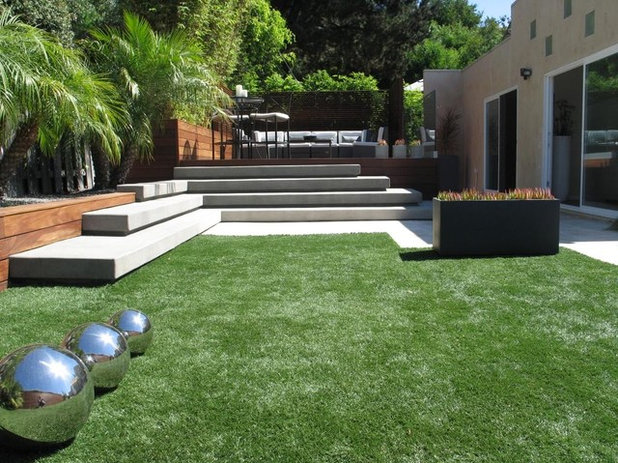
Grounded - Richard Risner RLA, ASLA
Everything about this landscape exemplifies the best of modern design. Taking each element individually, there are plain concrete steps (that double as seating), a patch of lawn, a raised eating area and plain fencing; in other words, nothing that might seem distinctive. But the sheer overall volume of the steps, the interesting cutout in the expanse of grass and, most of all, the unexpected silver balls, give the entire space a look that is clean, simple and strongly graphic.
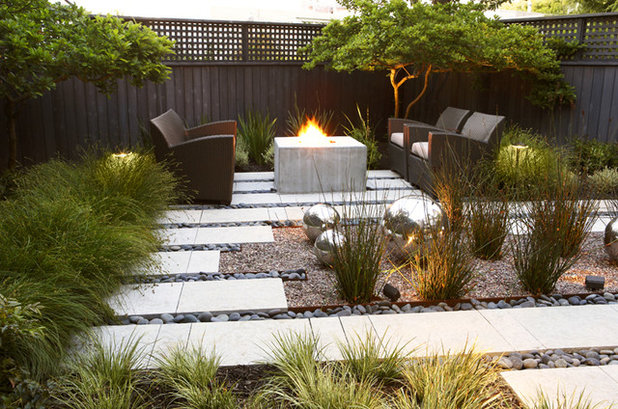
Arterra Landscape Architects
Geometric shapes as well as concrete and gravel are hallmarks of contemporary design. These pavers, with their alternating lengths, create interesting movement within the space while still leading to the fire pit focal point at the end of the yard. Grasses soften the look without overpowering the space or looking too frilly. Dark furniture with a contemporary look is unobtrusive enough to almost recede into the fence line.
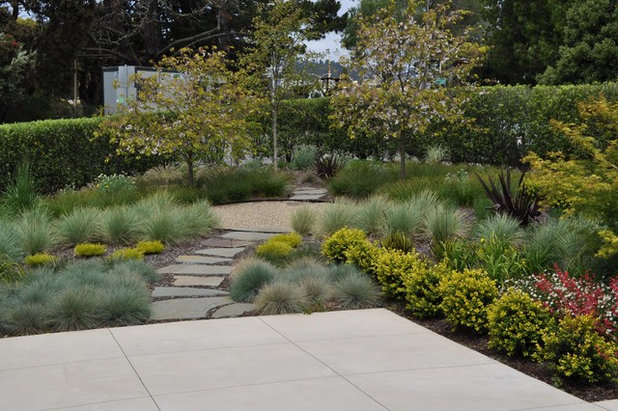
Huettl Landscape Architecture
Filled with annuals, perennials and roses, this would be a traditional garden in a typical backyard. Filling the same space with symmetrical rows of grasses and shrubs creates a completely different look.
Though hardscaping may play a leading role, plant choice is still a major factor in a modern or contemporary landscape. Ideally, most should have an architectural character (think phormium or blue fescue) with foliage in shades of green or gray. Though colorful flowers and plants can be used in this style of landscaping, they're most effective when treated as accent pieces.
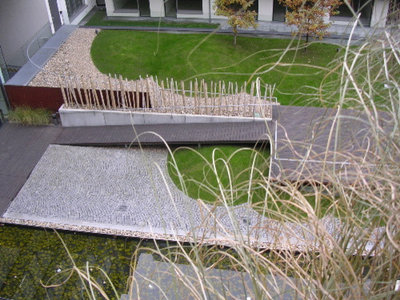
Squares and rectangles are commonly used geometric shapes in a contemporary landscape, but an occasional circle can work wonders in softening a rectangular yard. Setting circles within the rectangular tiers and adding a long, thin planter helps to play up the contrast of shapes here.
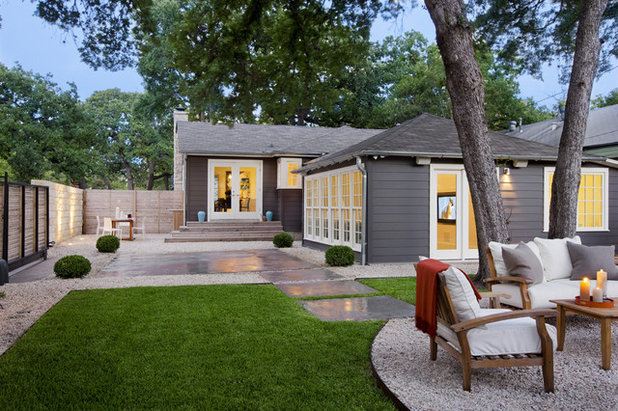
Texas Construction Company
A contemporary landscape works well with a variety of architectural styles, including a ranch home. Here the sleek lines reflect the lines of the house and create a tranquil — and easy-care — space for parties or relaxing. Modern landscaping is often thought of as being showy or dramatic, but it can also be very subtle.
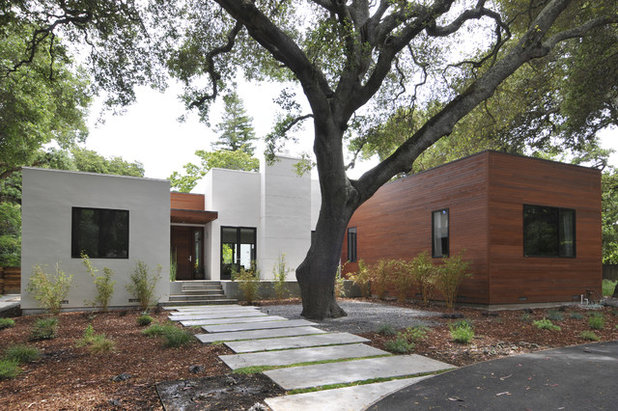
Ana Williamson Architect
The elements of a typical Southwestern garden could be custom made for a contemporary landscape. The plantings are sparse, typical of an area where rainfall is scarce. The hardscaping materials mimic the colors of the house, allowing the landscaping to feel like it is an extension of the home rather than a separate space. The single tree, with its sculptural form, is the only statement piece needed for this entry.
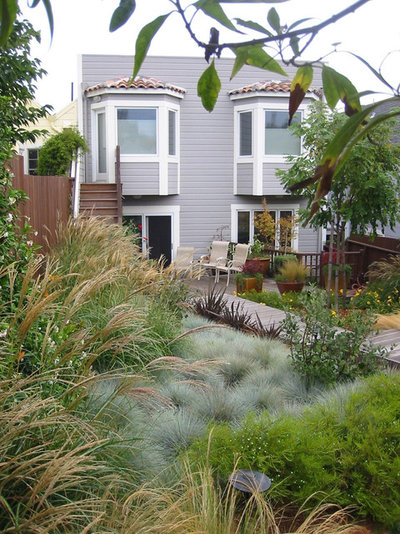
Arterra Landscape Architects
Though most modern landscapes are paired with a contemporary or at least ranch-style house design, you don't need to stick with that. These ornamental grasses work surprisingly well at the back of a traditional San Francisco home and are a nice break from the expected cottage or English garden. The muted colors reflect those found in the city's often foggy natural landscape and create a year-round peaceful retreat.
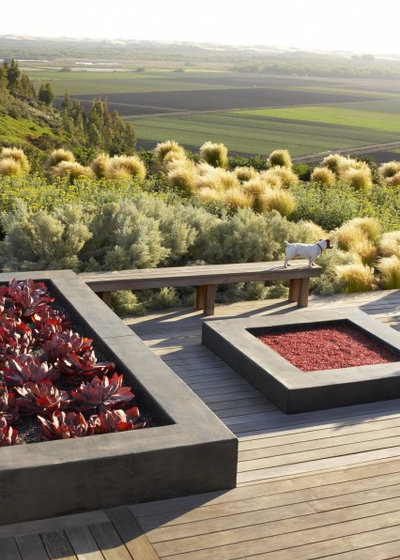
Jeffrey Gordon Smith Landscape Architecture
A contemporary hardscape, with its simple lines and low profile, also works well when paired with the natural landscape. Here, the garden itself has a low profile, allowing the hillside foliage and the view to be the stars of the show.
In this setting, the boundaries between garden and nature are distinct, but you can also gradually blur the line between the formal and natural spaces. For example, use native plants in formal rows to line the edge of your space, then gradually loosen the rows so they begin to blend into the free-growing space beyond. Another idea would be to use a water feature as a bridge between the two spaces.
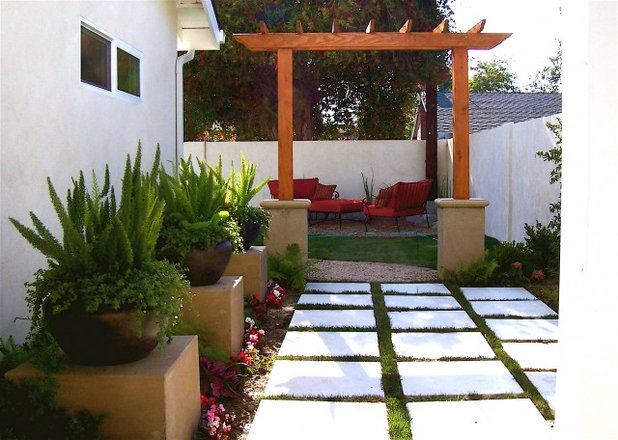
Carolyn Wesling
Aspects of a traditional landscape — a paver path, large planters and an arbor leading to a seating area — get a modern take in this design. The pavers are set in a geometric grid rather than a wandering path, which gives a patiolike feeling to this narrow space. Other nontraditional features include the heavy, blocklike adobe-colored boxes along the walk that give a contemporary nod to traditional terra-cotta pots, and the pillars of the same material that tie the wood arbor they're supporting into the rest of the space.
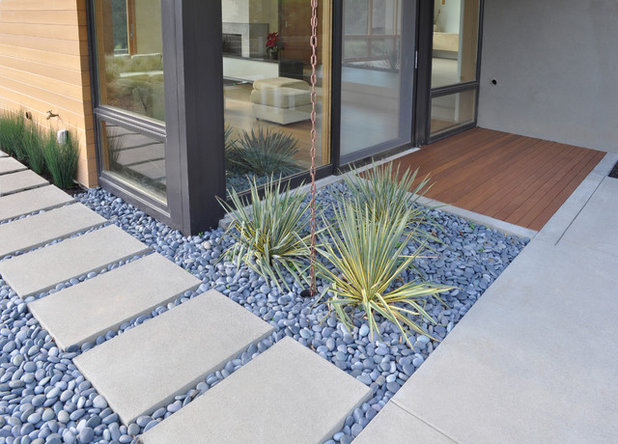
Huettl Landscape Architecture
Hardscapes play a major role in contemporary design. Here, mixing and matching materials — concrete, gravel and decking — works. While each material defines a specific space, whether it's the garden bed, entry area or pathway, keeping each area the same relative size and on the same horizontal plane means no single material overpowers the others.
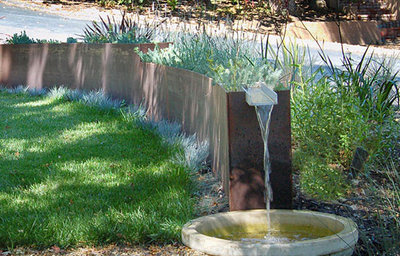
Huettl Landscape Architecture
Water is a common element in a modern landscape, but don't expect a rock-filled waterfall or a naturalistic garden pool. Instead, you'll find something like this installation, where water drops in a single stream from the edge of a tall, narrow metal planter into a concrete bowl below. Incorporating water into planters, whether they're filled with plants or not, is a simple way to add a contemporary touch to any garden space.
See more fountains like this one
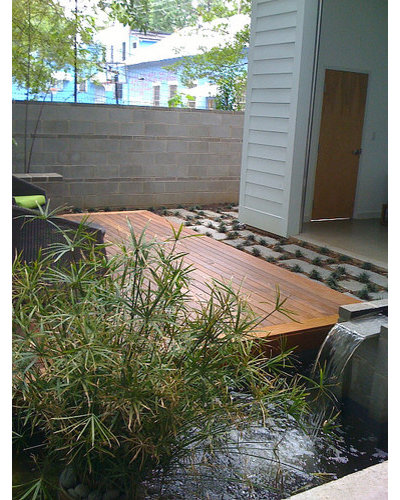
Or do a contemporary version of a waterwheel. A water feature sitting at the end of a deck feels like a natural extension of the space. The play of light on the moving water provides a nice contrast to the wood, and the sound of water invites you to linger.
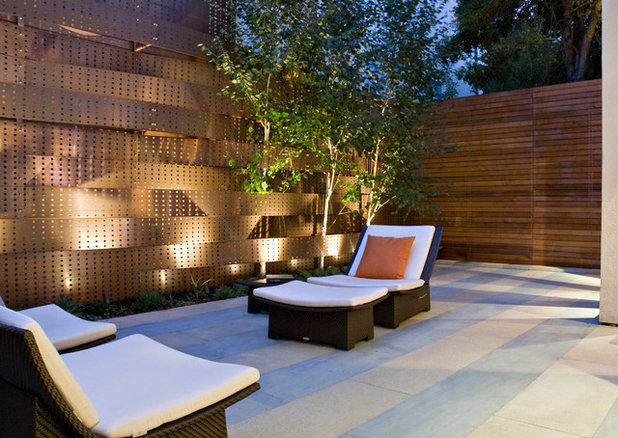
Randy Thueme Design Inc. - Landscape Architecture
Contemporary landscapes in particular lend themselves to unusual fencing. In this case, the fencing is more than unusual; it's the highlight of the space. Adding the uplighting just draws even more attention to the oversize basketweave design. Note the subtle stripes in the paving, another interesting feature in what is essentially an unadorned patio.
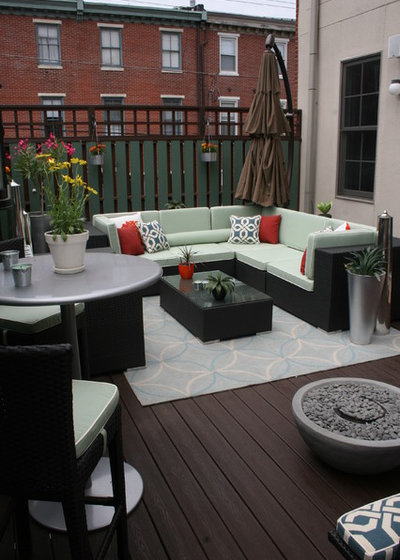
Busybee Design
Creating a contemporary seating space otudoors is surprisingly simple as well as comfortable and inviting. A softly colored but not too sweetly pastel rug anchors the space, the dark wood of the deck and furniture is modern in feeling, and bright red accents echo the brick of the building beyond.
If you crave a modern touch, even in a traditional garden, a patio or deck may be the perfect spot to experiment. It's usually separate from the rest of the garden, so a different style isn't as jarring.
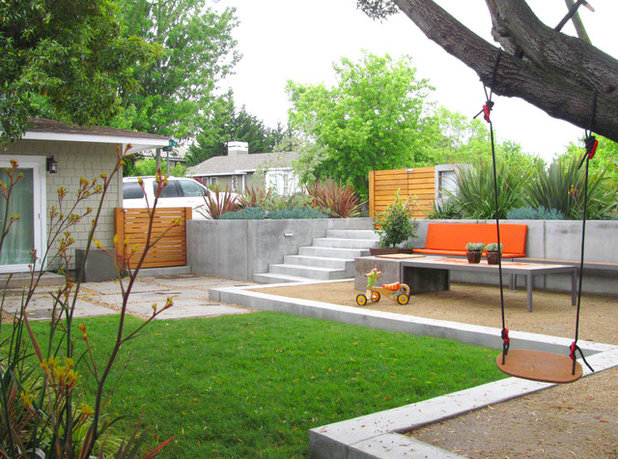
Shades Of Green Landscape Architecture
A front yard gets a modern twist: The concrete patio and edgings divide the space into entryway, play area, and sitting spots, plus note the warm color and horizontal structure of the gates, the simplified plantings, the bright orange cushions and the contemporary table. The sunken feel of the space, reinforced by the wall with plantings above it, makes the entire space seem protected yet still open. There's room to relax and play, all in safety.
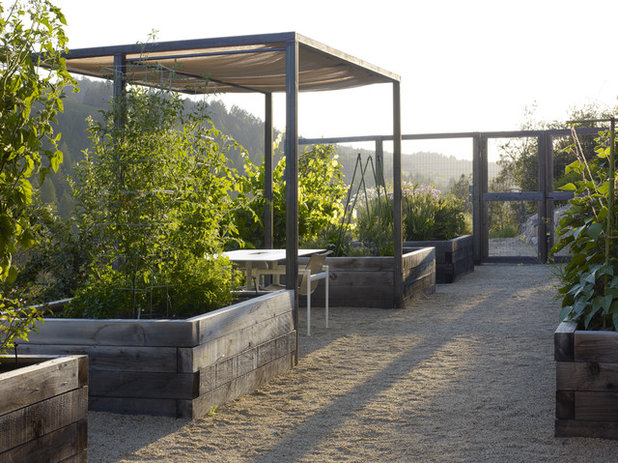
Blasen Landscape Architecture
Even vegetable gardens can go contemporary. These raised beds and gravel paths could be straight out of a traditional French potager, but the simple steel pergola and table beneath give this space a modern look.
More:Keep Your Garden in Lines
Give Your Landscape Rhythm





